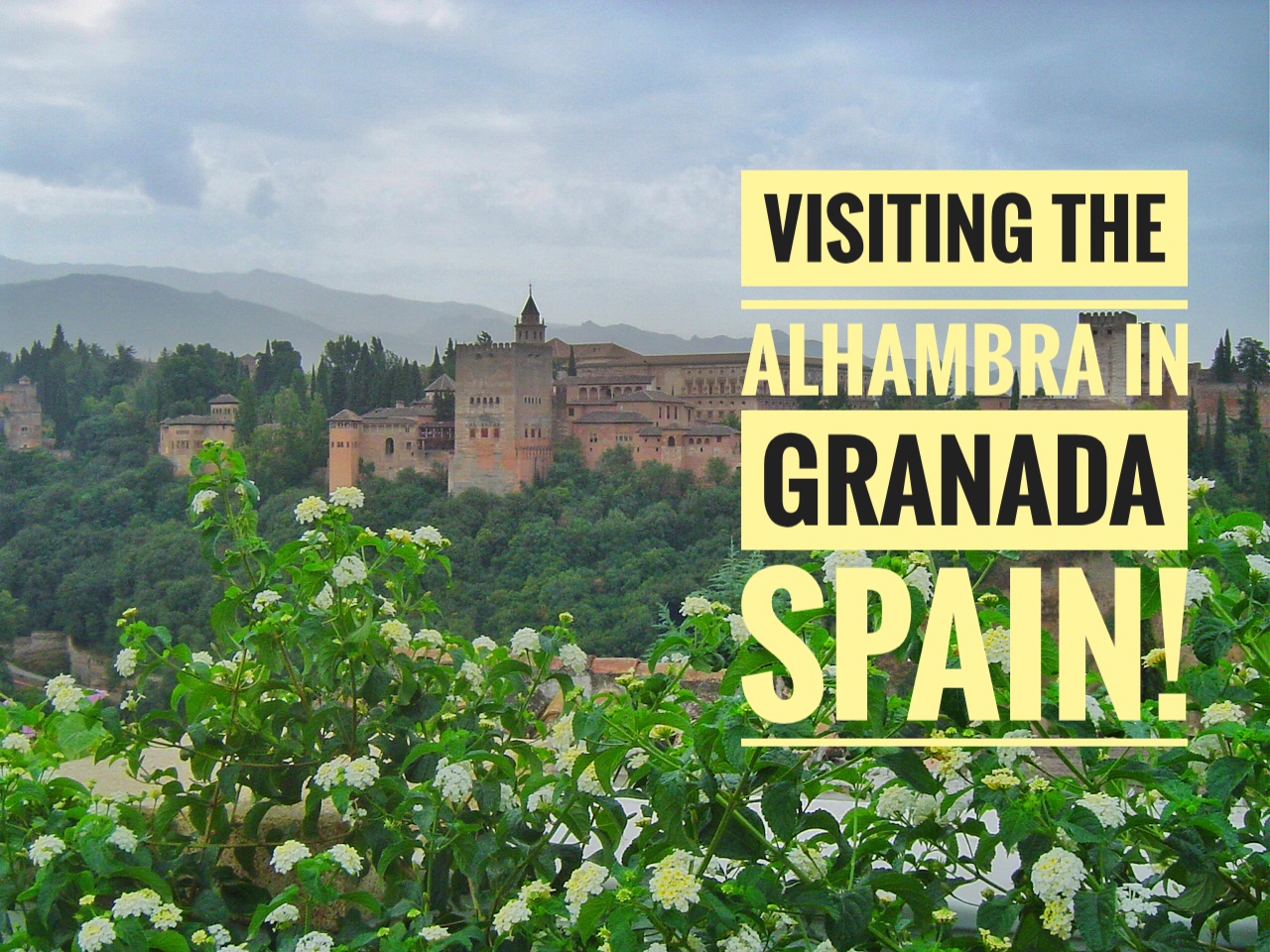

The Alhambra is filled with history and charm.

No visit to the south of Spain is complete until you have visited one of Andalusia’s most iconic sites, the exquisite Alhambra fortress, which has been both an Islamic Palace during southern Spain’s 800 years under Moorish rule and a Christian Palace during the Roman Catholic rule. The fortress and the city of Granada really has such a fascinating history and is definitely worth a visit. This is just one of the many treasures of traveling through Andalusia and the south of Spain. It was originally constructed as a small fortress in AD 889 on the remains of Roman fortifications.
Albaicín

One of the best places to start to see an overview of the Alhambra is to walk through Granada’s oldest neighborhood, the Albaicín, which is the former Arabic quarter. This compact network of whitewashed houses and winding cobbled streets sits on the hillside opposite from the Alhambra across the River Darro. This is Granada’s bohemian and artistic center filled with art, live music and beautiful squares that are just calling out to be explored. The best way to get to know this lovely and iconic neighborhood is to get lost and just explore on foot.

You might breath a little heavier after walking around and through the streets of the Albaicín, as it is hilly, but you will be so happy you explored these tiny streets as the views of the Alhambra and the Sierra Nevada mountains behind it are so picturesque. The most popular square within the Albaicín to view the Alhambra is Mirador San Nicolás, which offers a panoramic view not to be missed. Looking up from Mirador San Nicolás, you can see the majestic walls of the Alhambra on top of the cliff. This part of the palace and fortress complex is known as the Alcazaba, which is one of the oldest parts of the Alhambra as it is the outer wall. The fortress has the backdrop of the Sierra Nevada Mountains in the background that are just breathtaking to view in person.
Alhambra

Granada’s massive fortress complex, the Alhambra, sits on top of the Darro Valley plateau with the Sierra Nevada mountain peaks in the background. The Alhambra gets its name from the Arabic word al-Hamrāʼ which means “the red one”, while the complete word was al-Qalʻat al-Ḥamrāʼ, which means “the red fortress”. It got this name because of the red walls of the surrounding fortress, especially when the sun shines down and reflects off the towering walls with a reddish golden hue. The fort was built in the 9th century and has gone through countless changes throughout history. It was a great location for a military fortress as it had a great view of the city below. Over time, the military fortress changed into a castle and residence of royal families. The walls were rebuilt in the 1200’s by the Moorish ruler, Mohammed ben Al-Ahmar, who was the Emirate of Granada at the time. Moorish baths and a Mosque was also built, which of course was later converted into the Church of St. Mary when the Alhambra became a Christian court in 1492 when the Catholic Monarchs conquered Granada. Later, several structures were built to house prominent citizens, military barracks, along with a church and Monastery.

The Nasrid Palaces are very beautiful and were built by the Nasrid Kings. They were the last Moorish rulers of Granada during the 13th and 14th centuries. The Nasrid Palaces have some of the most beautiful Islamic art within the Alhambra. These Palace’s have some extremely intricate interiors filled with calligraphy and beauty. I have always been fascinated by the beauty of Islamic art, Islamic calligraphy and Islamic architecture and seeing all of these in one location is really is gorgeous with the amount of intricate details.

The Patio of the Lions (Patio de los Leones) is probably the most famous place of the Alhambra. It has that name because of the twelve lions which are part of the fountain in the middle of the patio.

Patio de los Arrayanes or the court of the myrtles is a perfect example of the use of water in the Alhambra. This elongated pool seems to increase the size of the palace, by its captivating mirror effect, while the grandeur of the palace is amplified by reflections of the intricate arches in the water.

The Museum of the Alhambra has outstanding exhibits on the Hispanic-Moorish civilization that conquered southern Spain!

Generalife

The Generalife was built and became one of the Alhambra’s Summer Palaces because of its gorgeous gardens that provided a cooling atmosphere for the sultans during the extremely hot summers of Andalusia. Many of the fountains and bodies of water within the Generalife are surrounded by flower beds and moorish arches everywhere you look. The reflections of the architecture and flowers within the water adds to the peacefulness of the palace. The Generalife’s external walkways provide a stunning view of the Albaicín, the old Arabic neighbourhood along the other side of the River Darro.

The Alhambra and the Generalife were collectively designated a UNESCO World Heritage site in 1984 and that’s just another reason this beautiful fortress is one of the Treasures of Traveling in southern Spain!

— Luke Keeler

Check out the map below to see where the Alhambra is located at!
Pin me!
Like this article? Then Pin me so other travelers can find it!


Alhambra is absolutely gorgeous! The buildings look well-kept even to the minutiae of detail like the Islamic calligraphy and carvings.
Yes, the Alhambra is gorgeous! The Islamic art and architecture located throughout the entire palace is incredible!